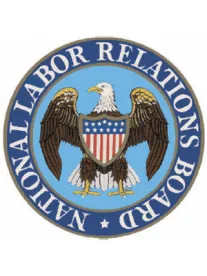Be Fair to Unfair Labor Practice Strikers, Labor Board Says
To ensure adequate staffing and continuity of patient care, hospitals faced with impending strikes by registered nurses often contract with employment agencies to supply temporary replacements. Typically, these agencies require the hospitals to ensure employment of the replacements for multiple days, no matter how long the strike lasts. These contractual obligations often are a reason hospitals may refuse to reinstate strikers at the end of a strike, postponing reinstatement until the contractual obligation is fulfilled. In Pacific Mutual Door, 278 NLRB 854, 856 (1986), the National Labor Relations Board (NLRB) held that fulfillment of a short, multi-day contract obligation with an employment agency that supplied the employer with temporary replacements for strikers was a lawful reason for refusing to reinstate returning strikers until the obligation was fulfilled, and not at the end of the strike.
Recently, the Board decided that the same leeway does not apply to unfair labor practice strikes, which are strikes caused or prolonged by an employer’s conduct that violates the National Labor Relations Act (NLRA). Alaris Health at Castle Hill, 367 NLRB No. 52 (Dec. 21, 2018).
The Board often allows an employer up to five days to reinstate unfair labor practice strikers “in recognition of the administrative difficulties associated with reinstating striking employees on short notice”; the five days “is not to enable the employer to delay reinstatement or to obtain 5 days during which he is not required to pay backpay ….” Accordingly, in Alaris Health at Castle Hill, the Board held that an employer cannot base its delay in reinstating unfair labor practice strikers on a contractual obligation with a temporary employment agency. Such a basis is considered an unlawful condition to reinstatement and “backpay will commence as of the unconditional offer to return to work.” (The employer in Alaris Health at Castle Hill denied that its delay was justified by the five-day administrative grace period for reinstating unfair labor practice strikers.)
In light of this NLRB decision, it is more important than ever for employers faced with unfair labor practice strikes to carefully document their legitimate reasons for delaying reinstatement of strikers who have made unconditional offers to return to work.
Civility Rules Rule!
A broadly worded workplace “civility” rule has been approved by the NLRB’s General Counsel (GC).
The GC has determined that, pursuant to the NLRB’s landmark Boeing Co. (365 NLRB No. 154 [Dec. 14, 2017]) balancing test, an employer’s rule entitled “Commitment to My Co-workers,” which required employees to “accept responsibility for establishing and maintaining healthy interpersonal relationships,” to speak with coworkers directly and “promptly” about problems between them rather than speaking with others, to not complain about coworkers, and to “find[] solutions to problems rather than complaining about them or blaming someone for them” was a lawful “Category 1” rule. The GC also decided that the company could terminate employees who refuse to sign the policy. Wilson Health, 09-CA-210124 (Advice Memorandum, issued June 20, 2018, released Dec. 17, 2018).
The GC applied the Boeing Co. balancing test, designed to allow the Board, over time, to classify various employer rules into one of three categories (see our article, Labor Board Sets New Standard for Determining Lawfulness of Facially Neutral Workplace Rules), thus “eliminating the need to conduct case-specific balancing as to certain types of rules ….” Under Section 7 of the NLRA, employees have the right to choose to engage in union activity and “protected concerted activity” involving two or more employees to effect changes in “terms and conditions of employment or otherwise improve their lot as employees.” In cases “where a facially neutral employer work rule, if reasonably interpreted, would potentially interfere with Section 7 rights, the Board will evaluate … (i) the nature and extent of the potential impact on Section 7 rights, and (ii) legitimate business justifications associated with the requirement(s).” Although there may be exceptions, employers that promulgate reasonable civility rules based on legitimate business justifications can be comfortable that those rules comply with the NLRA.
Robb Gives Incomplete to NLRB’s Proposed Joint-Employer Rule
The NLRB’s General Counsel is not completely happy with the Board’s proposed joint-employer rule, originally published in the Federal Register on September 14, 2018. Under the proposal, “an employer may be found to be a joint-employer of another employer’s employees only if it possesses and exercises substantial, direct and immediate control over the essential terms and conditions of employment and has done so in a manner that is not limited and routine. Indirect influence and contractual reservations of authority would no longer be sufficient to establish a joint-employer relationship.”
In his December 10 comments released on December 19, Peter Robb wrote that the proposed rule does not provide enough clarity. Robb argued that the proposal leaves open such important questions as: (1) which employment terms are “essential,” (2) which of those “essential” terms are critical in determining whether an entity is a joint employer, (3) how many (and to what extent) terms must actually be subject to the putative joint employer’s direct and immediate control in order to establish joint-employer status, and (4) what is the meaning of “substantial,” “limited,” and “routine” in the proposed rule.
Robb also argued that the proposed rule creates “a ‘one size fits all’” standard, rather than “addressing industry specific requirements or concerns.” He argued that steps a company has taken to comply with industry regulations or to monitor its own contracts should not be deemed to be the type of control of essential employment terms that would create a joint-employer relationship.
In addition, Robb urged the Board to clarify that a joint-employer analysis is unnecessary “unless the putative joint employer was involved in the alleged unfair labor practice or an alleged unfair labor practice cannot be adequately remedied without the participation of the joint employer or to comply with a remedial order.”
Finally, Robb argued that a joint-employer finding should “rarely, if ever, be used to create a bargaining obligation with the labor representative of [the] co-employer’s employees.”
It remains to be seen how much the comments will affect the timing and content of the Board’s rulemaking.
(Further complicating progress toward a final joint-employer rule is the D.C. Circuit’s decision upholding the Board’s determination that both reserved authority to control and indirect control can be relevant factors in the joint-employer analysis. Browning-Ferris Industries of Cal., Inc. v. NLRB, No. 16-1028 (D.C. Cir. Dec. 28, 2018). However, the Court reversed the Board’s articulation and application of the indirect-control element to the extent it did not distinguish between indirect control the common law of agency considers inherent in ordinary third-party contracting relationships, and indirect control over the essential terms and conditions of employment. The Court remanded that aspect to the Board for it to explain and apply its test in a manner consistent with the common law of agency.)
Bars – Humbug, NRTWLDF Says
On December 2017, the NLRB requested information from the public regarding whether the 2014 “quickie election” rule should be retained without change, retained with modifications, or rescinded. Not satisfied with the NLRB’s apparent scope of review of the rule, the National Right to Work Legal Defense Foundation (NRTWLDF) recently sent a letter to the NLRB requesting it to expand review to non-rule doctrines that affect employees’ ability to remove an incumbent union.
The NRTWLDF asked for review of “all of the … doctrines created by past Board Members that restrict workers’ right to hold decertification elections, … including [t]he ‘successor bar’ [that] blocks workers from decertifying a union for an indefinite amount of time after the previous employer has been replaced by a successor[;] [t]he ‘settlement bar’ rule [that] prevents workers from removing an unwanted union after a settlement agreement between a union and their employer[;] [and] [t]he ‘contract bar’ [that] restricts when workers can file decertification petitions to a narrow window of time that may occur only once in three years.” The NRTWLDF argued that the bars “improperly obstruct employees from exercising their free choice rights guaranteed by [the NLRA].”
The NLRB has not released a response yet.






 />i
/>i

